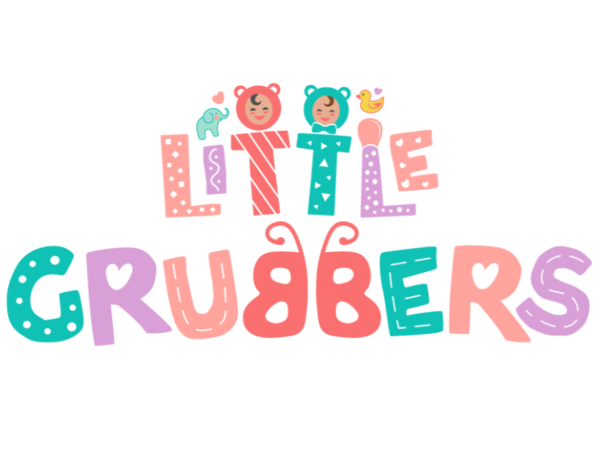Why Choosing Safe Baby Products Matters
As a mom, you want only the best for your baby—from the food they eat to the products they use every day. But with so many options on the market, choosing safe baby products can feel overwhelming. Reading labels is one of the most important steps you can take to ensure your baby's safety and well-being.
Understanding what to look for (and what to avoid) on product labels can make all the difference in creating a safe and healthy environment for your little one. Let’s dive into practical tips on how to decode labels and make smart, safe choices for your family.
1. Why It’s Important to Read Labels on Baby Products
Babies are more sensitive to chemicals and toxins than adults. Their skin is thinner, their respiratory systems are still developing, and they often explore the world by putting things in their mouths. This is why it’s crucial to:
- Avoid Harsh Chemicals: Look for products that are free from parabens, phthalates, and synthetic fragrances.
- Check for Allergens: Especially if your baby has sensitive skin or a history of allergies.
- Ensure Age Appropriateness: Some products, especially toys and feeding tools, have specific age recommendations for safety.
2. How to Read Baby Product Labels: What to Look For
Ingredients List
The ingredients list can tell you a lot about a product’s safety:
- Look for Natural Ingredients: Products with familiar, plant-based ingredients are often gentler.
- Avoid Known Toxins: Stay away from ingredients like BPA, formaldehyde, and artificial dyes.
- Prioritize Simplicity: The shorter the ingredient list, the better—especially for skincare and feeding products.
Certifications and Safety Seals
- USDA Organic: For food and skincare products, this certification means the product is free from synthetic pesticides and fertilizers.
- BPA-Free: Important for feeding products like bottles, spoons, and storage containers.
- Non-Toxic Labels: Indicates the product does not contain harmful chemicals or heavy metals.
Expiration Dates and Storage Instructions
- Check Expiry Dates: Especially for skincare products and baby food.
- Follow Storage Guidelines: Some items need to be kept in specific conditions to maintain safety and effectiveness.
3. Common Red Flags on Baby Product Labels
When choosing baby products, avoid labels that include:
- Fragrance or Parfum: These terms can hide a host of synthetic chemicals.
- “Natural” Without Certification: Words like "natural" and "eco-friendly" aren't regulated, so always look for third-party certifications.
- Long, Unpronounceable Ingredients: While not always bad, these can sometimes indicate synthetic or potentially harmful chemicals.
4. Safe Choices for Specific Baby Products
Feeding Products
When it comes to items like bottles, spoons, and utensils:
- Choose BPA-Free Plastics: Avoiding BPA helps reduce exposure to potentially harmful chemicals.
- Look for Food-Grade Silicone: It’s a safe, durable choice for baby spoons and teethers.
✨ The Little Grubbers 3-in-1 Baby Spoon™ is a great example of a safe feeding tool. Made from non-toxic materials, it supports independent eating and sensory development.
Skincare and Bath Products
- Use Fragrance-Free Formulas: These are less likely to irritate your baby’s skin.
- Avoid Harsh Surfactants: Look for gentle, plant-based cleansers instead of sulfates.
Toys and Teething Products
- Avoid PVC and Phthalates: These are often found in plastic toys and can be harmful if ingested.
- Opt for Non-Toxic Paints and Dyes: Especially if your baby likes to mouth their toys.

5. Practical Tips for Busy Moms: How to Shop Safely
1. Do Your Research Before You Shop
- Check Reviews: Look for feedback from other parents on product safety and usability.
- Visit Trusted Websites: Sites like EWG’s Skin Deep Database provide safety ratings for personal care products.
2. Take Your Time in the Store
- Read Labels Thoroughly: Don’t rush; take a moment to look for certifications and avoid harmful ingredients.
- Ask for Help: Store associates may know which products are safest for babies.
3. Keep a List of Trusted Brands
- Stick to Brands with a Commitment to Safety: Companies like Little Grubbers prioritize non-toxic, safe baby products.
- Buy Directly When Possible: This helps avoid counterfeit products that might not meet safety standards.
6. Choosing Safe Feeding Products: The Little Grubbers Advantage
When it comes to feeding tools, safety and functionality go hand in hand. The Little Grubbers 3-in-1 Baby Spoon™ is a perfect example of a product that meets safety standards while also making feeding easier and more enjoyable:
- Made from Non-Toxic, BPA-Free Materials
- Designed for Easy Grip and Independence
- Supports Sensory Development and Safe Self-Feeding
By choosing safe feeding products like the 3-in-1 Baby Spoon™, you’re not only keeping your baby safe but also promoting healthy habits early on.
Conclusion: Safety First, Always
Shopping for your baby doesn't have to be stressful. With a bit of knowledge and a focus on reading labels, you can make informed choices that support your baby’s health and happiness.
🛒 Ready to make a safe choice today? Check out the Little Grubbers 3-in-1 Baby Spoon™ for a feeding tool you can trust. Your baby deserves the best, and safety is always the top priority.
👉 [Shop Now] and enjoy peace of mind knowing you’ve chosen a safe, reliable product for your little one.
We’d Love to Hear from You!
What are your go-to tips for choosing safe baby products? Share your experiences and favorite safe brands in the comments below!
Would you like me to refine this further or focus on specific safety certifications or product categories? 😊

